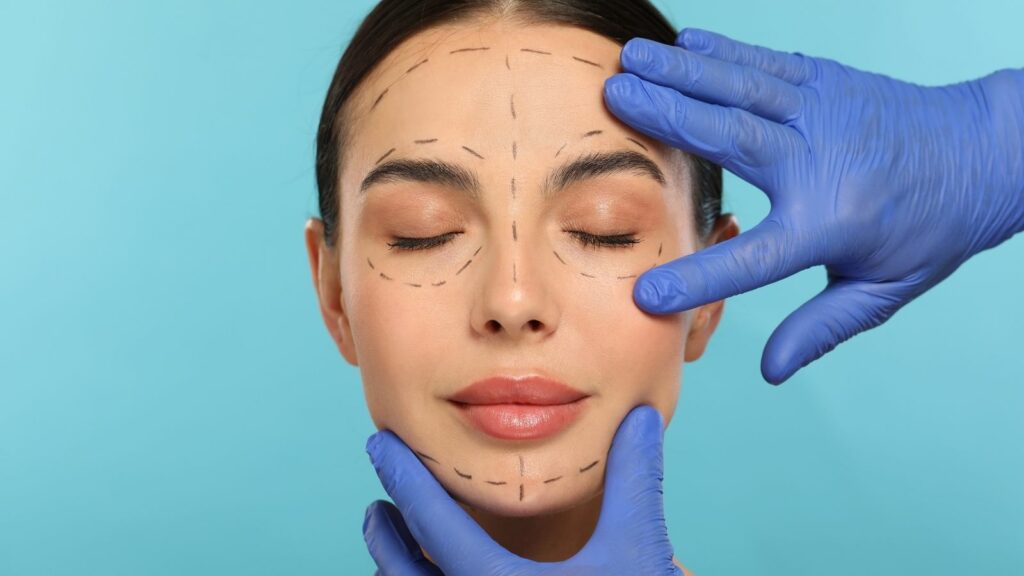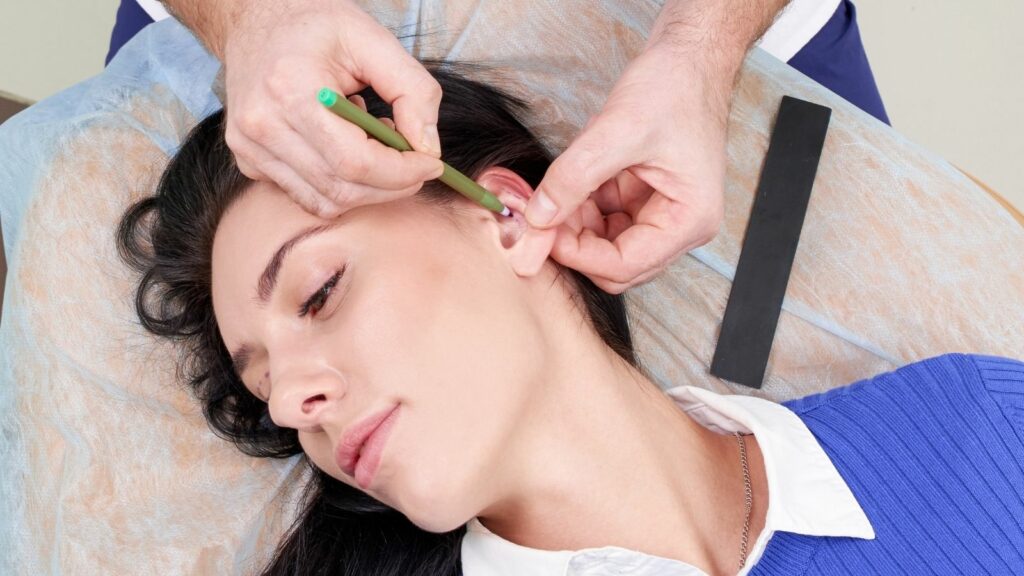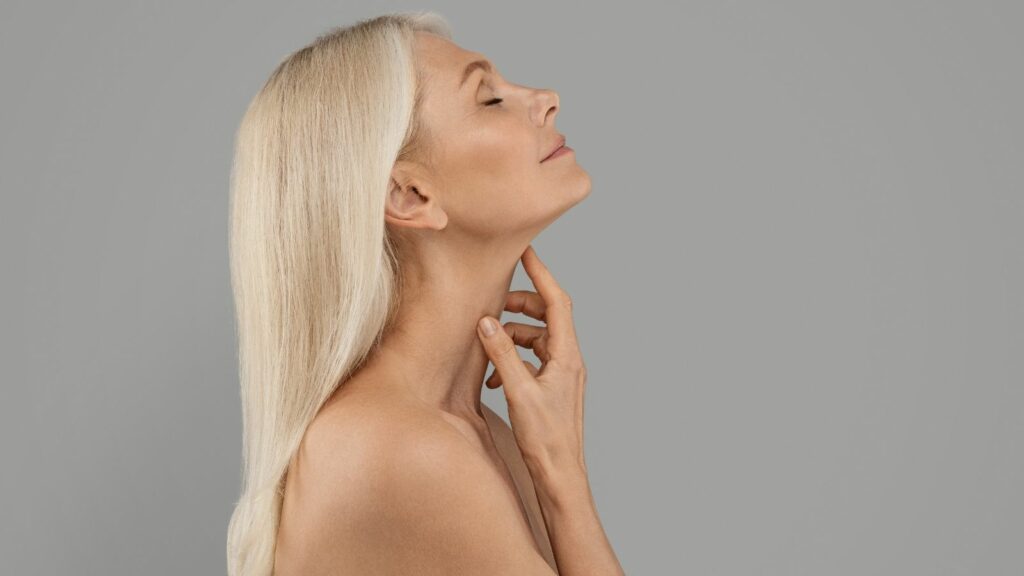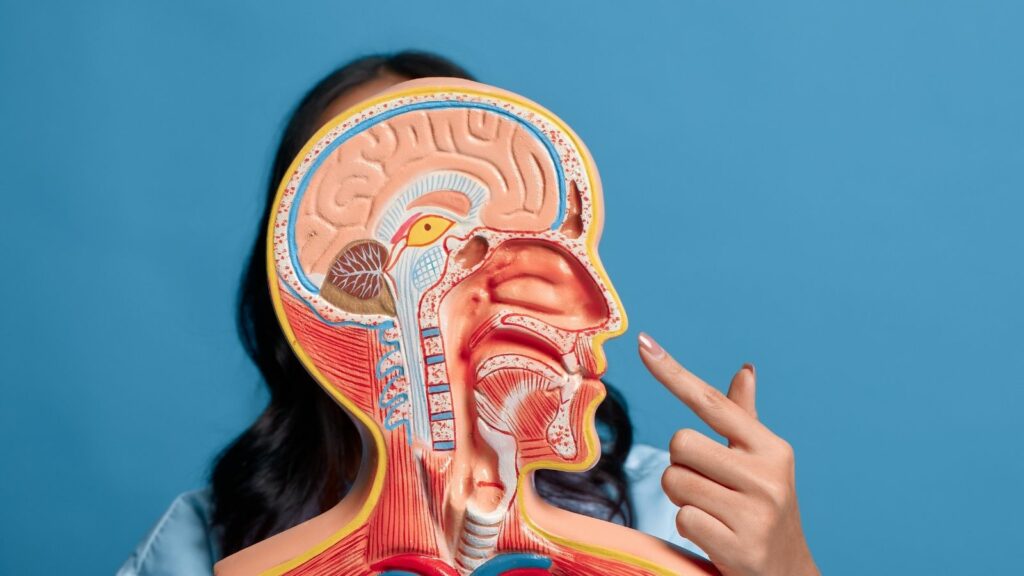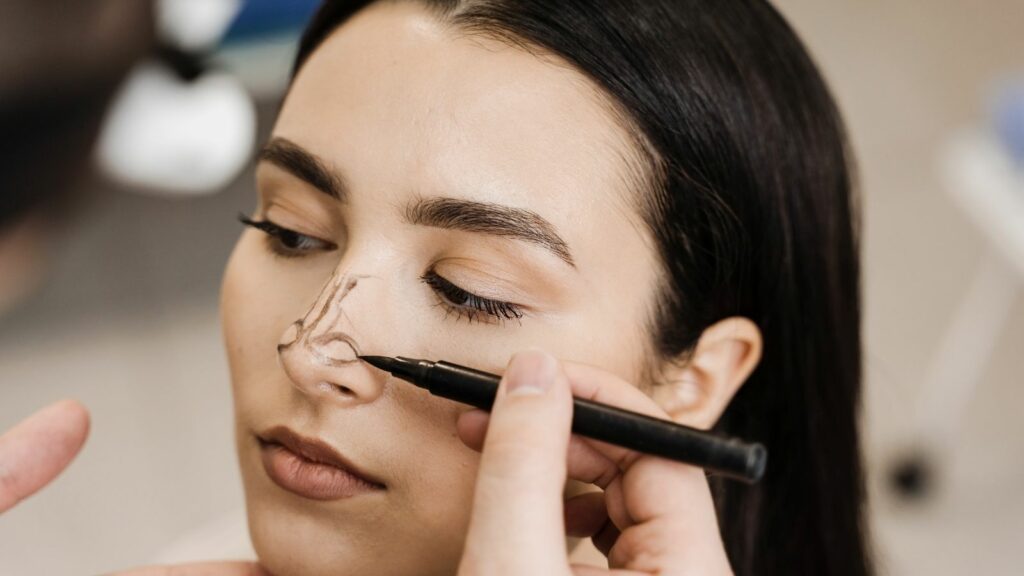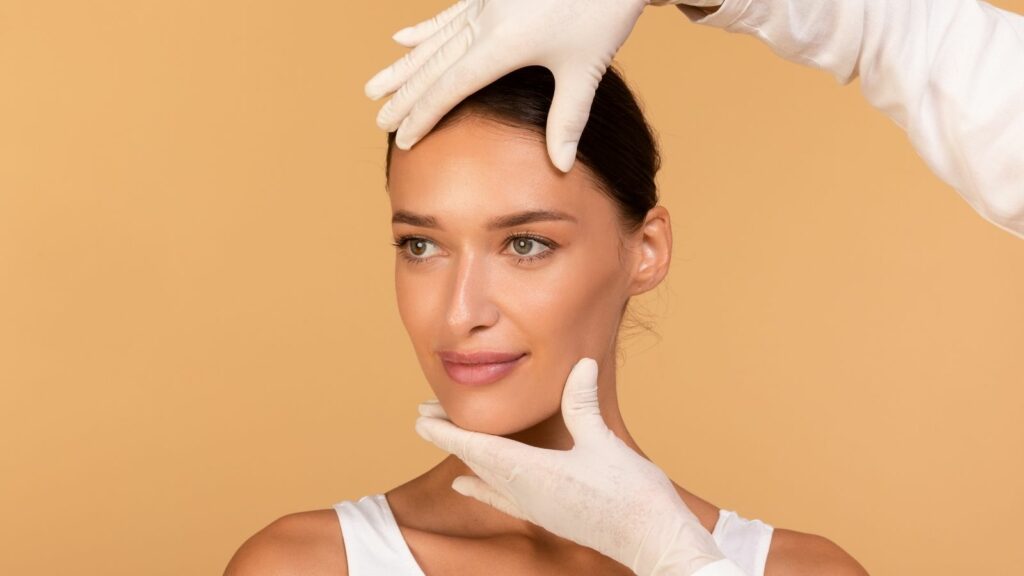Profiloplasty is a holistic approach in modern facial aesthetics that considers the face as a whole and aims for harmonic proportions. In this philosophy, the main focus is not the perfection of individual organs, but the overall harmony of the face. In particular, the balance between the nose and the chin in the profile view forms the basis of aesthetic perception. Therefore, rhinoplasty (nose aesthetic surgery) and chin implant operations, also known as mentoplasty, are often planned together in order to balance the facial proportions and create a more attractive profile. This combined approach aims to achieve natural results in which the facial features are in harmony with each other.
Why Are the Nose and Chin Evaluated Together in Profile Aesthetics?
Think of your facial profile like a scale; on one side is the nose, on the other side is the chin. There is such a strong visual relationship between these two structures that even the smallest change in one of them can completely alter how the other is perceived. We can liken this to a simple seesaw analogy: when one end goes down, the other automatically goes up.
The most common scenario is a person who complains about the size of their nose. However, when a detailed profile analysis is carried out, it becomes clear that the problem does not always originate from the nose itself. In many cases, the chin being smaller or more recessed than normal (microgenia) causes even a normally sized nose to be perceived as much larger and more prominent. This is a kind of optical illusion. A weak chin leaves the framework of the lower face underdefined and causes all the attention to be drawn to the nose right in the middle of the face.
In such a case, a surgery that focuses solely on reducing the nose may actually reinforce the imbalance instead of correcting it. On the other hand, sometimes even without touching the nose, simply bringing the chin slightly forward can make the nose appear more refined, smaller, and much more harmonious with the face. For this reason, in every individual considering nose aesthetics, the position of the chin must also be evaluated as part of the whole—this is one of the cornerstones of modern aesthetic surgery. The ultimate goal is not to create a “beautiful nose” in isolation, but to shape a balanced and harmonious profile that suits that particular face the best.
How Is the Ideal Facial Profile Analyzed Before Surgery?
Facial aesthetic analysis goes beyond personal preferences and is based on universal proportions that have been recognized for centuries in the worlds of art and anatomy. This evaluation allows the surgeon to create the most appropriate plan for your face. There are several key factors taken into consideration during facial analysis:
- The vertical rule of thirds of the face
- The relationship of the chin tip to the lower lip
- Chin tip projection (how far it protrudes)
- The angle between the chin and the neck
- The depth of the groove between the lower lip and the chin
- The width and height of the chin in the frontal view
One of the most basic principles is to divide the face vertically into three equal parts: from the hairline to the eyebrows, from the eyebrows to the base of the nose, and from the base of the nose to the chin tip. In an ideal face, these three segments are balanced with each other. The nose defines the character of the midface, while the chin defines the character of the lower face.
In modern analysis, profile evaluation is particularly important. For example, in women, the chin tip being about 1–2 mm behind the lower lip gives a more feminine impression, whereas in men, the chin tip being almost in line with the lower lip creates a more masculine frame. If your chin is significantly behind this ideal line, it means the nose–chin balance is disrupted. This systematic and objective analysis clearly reveals the real source of your concern and enables the most accurate surgical roadmap to be drawn.
What Is the Role of 3D Simulation Technology in Surgical Planning?
The foundations of a successful aesthetic operation are laid not in the operating room, but long before that in the consultation room. One of the most important tools in this process is three-dimensional (3D) imaging and simulation technology. Thanks to this, the question “How will the result look?” is no longer a complete uncertainty.
This technology creates a high-resolution digital copy of your face. The surgeon can then virtually apply the planned changes on this digital model. Details such as how much of the dorsal hump will be reduced, how much the nasal tip will be raised, or how a chin implant will change the expression of your face can be seen clearly before surgery. The most important advantages that 3D simulation technology provides for both the patient and the surgeon are:
- Making expectations more concrete
- Seeing the possible result from different angles
- Establishing a common goal between patient and surgeon
- Simplifying the decision-making process
- Determining the most appropriate size and shape of the implant
- Bringing surgical planning to millimetric precision
This technology is invaluable, especially in showing how much a procedure that the patient may not have initially considered—such as a chin implant—can positively contribute to the overall appearance. In this way, the patient can make a much more informed and confident decision. It must be remembered that this is not a promise, but the visualization of a realistic and achievable goal.
What Are the Technical Options in Rhinoplasty (Nose Aesthetic Surgery)?
Rhinoplasty is an art that requires personalized planning, with no such thing as “one single right” method. Basically, there are two different approaches and two different philosophies. A modern surgeon selects the most appropriate of these techniques according to the patient’s anatomy and expectations, or combines them when needed.
Surgical Approaches: Open and Closed Technique
The main difference between these two techniques is where the incisions are made and, therefore, how much control the surgeon has over the surgical field.
Open Rhinoplasty: This is performed by making a small “gull-wing” incision on the strip of skin called the columella, which separates the nostrils. Through this incision, the nasal skin is lifted, and all the underlying cartilage and bony framework are brought directly into the surgeon’s field of view. This approach has several advantages:
- Complete control of the anatomy
- Ideal for severely crooked noses
- Superiority in revision (corrective) surgery
- Ease of precise tip definition
- Precision in placing and securing cartilage grafts
Closed (Endonasal) Rhinoplasty: All incisions are made inside the nostrils, leaving no visible external scars. As it creates less tissue trauma, post-operative swelling and bruising are often less. The closed technique has its own specific advantages as well:
- No externally visible scars
- Less swelling and bruising
- Faster initial recovery
- Shorter operating time
The answer to the question “Which is better?” varies from person to person. If major changes in nasal structure are needed, the open technique may be preferred, whereas for more minimal adjustments, the closed technique may be more suitable.
Surgical Philosophies: Structural and Preservation Rhinoplasty
These philosophies define how the nose will be reshaped.
Structural Rhinoplasty: The basis of this philosophy is to “disassemble and rebuild” the nasal framework. After removing excess bone and cartilage, the nasal roof is usually reinforced with grafts taken from the patient’s own cartilage. The aim is to create a solid and durable structure that will maintain the desired nasal shape during the healing process.
Preservation Rhinoplasty: This modern philosophy, which has come to the forefront in recent years, aims to preserve the natural anatomy of the nose as much as possible. For example, instead of rasping the nasal hump from above, some tissue is removed from underneath the nasal dorsum, and the nasal roof as a whole is lowered (Push Down/Let Down). In this way, the natural dorsal lines are preserved, the healing process can be faster, and the results may appear more natural.
What Methods Are Used for Chin Augmentation (Mentoplasty)?
There are various surgical and non-surgical options to improve chin contour and projection. The most appropriate method is determined based on the person’s anatomical structure, expectations, and the amount of time they can allocate for recovery.
Chin Implants
This is the most commonly used method for chin augmentation. Implants designed in various shapes and sizes and compatible with the body are placed on the chin bone to give the chin a more defined and balanced appearance. These implants are made of two main materials.
Characteristics of Silicone Implants
- Smooth and flexible structure
- Ease of placement
- Can be easily removed if necessary
- Do not integrate with the tissue (a capsule forms around them)
Characteristics of Porous Polyethylene (Medpor) Implants
- Rigid and porous structure
- Excellent stability through firm attachment to the bone
- Integration with the tissue, becoming almost part of the bone
- Very difficult to remove
The implant can be placed either through an incision under the chin or inside the mouth. An incision under the chin provides a better field of view for the surgeon and makes it easier to fix the implant precisely in the desired position, while an intraoral incision has the advantage of leaving no visible external scar.
Surgical Alternative: Advancing the Chin with the Patient’s Own Bone (Osseous Genioplasty)
In this method, no foreign material is used. A controlled cut is made in the lower part of the chin bone with special instruments, and the chin segment is advanced as a whole. It is then fixed in its new position with titanium plates and screws. This technique is ideal especially for patients with significant chin deficiency, asymmetry, or those who require a change in the vertical height of the chin. Its biggest advantage is eliminating the risks associated with implants. However, it is a more extensive procedure than implant surgery.
Non-Surgical Alternative: Filler Injections
For those who are afraid of surgery or who want to “test” the result before committing to a permanent change, chin fillers are an excellent option. Dense hyaluronic acid-based fillers are injected over the bone to give the chin temporary volume and projection. The procedure takes about 15–20 minutes in the clinic, requires no recovery time, and the result is immediately visible. Its effect lasts between 1 and 2 years.
How Does the Recovery Process Progress After Combined Surgery?
Having two surgeries performed at the same time does not mean that the recovery process will be twice as difficult. The body activates its healing mechanisms in both regions simultaneously. In general, it is the nose surgery, being more delicate, that determines the restrictions on activity and the duration of return to social life.
Recovery Timeline
- First 72 Hours: This is the period when swelling and bruising are most intense. Resting during this time is extremely important.
- Weekend: The cast and tapes on the nose, as well as the bandages on the chin, are removed. Swelling and bruising begin to decrease noticeably.
- Week: Most people can return to work if they have a desk job. Visible bruising has almost completely resolved or turned yellowish.
- Month: Approximately 70–80% of the swelling has subsided. The new shape of the nose and chin becomes clearly apparent, although both areas may still feel firm and swollen to the touch.
- 6 Months – 1 Year: The result for the chin is largely settled. The nose continues to refine gradually, with more definition appearing over time. The nasal tip, in particular, may take up to a year to reach its final shape.
Important Tips to Speed Up Recovery
There are several important steps you can take yourself to support the recovery process. These simple measures help you experience a more comfortable healing period and achieve the best possible outcome. Some key points to pay attention to after surgery include:
- Keep your head elevated as much as possible during the first week
- Apply cold compresses to the cheeks and around the eyes
- Avoid salty foods and drinks
- Avoid strenuous exercise and straining for at least 2–3 weeks
- Protect yourself from the sun
- Drink plenty of water
What Are the Risks of Profiloplasty Surgery and the Factors That Determine Success?
Every surgical procedure has potential risks. With modern surgical techniques and appropriate precautions, these risks are minimized. However, it is important for every patient to be informed about these possibilities.
What Are the Possible Risks?
Each procedure has its own specific potential risks:
Possible risks of rhinoplasty:
- Infection
- Bleeding
- Asymmetry
- Irregularities on the nasal dorsum
- Difficulty in breathing
- Failure to meet expectations and the need for revision
Possible risks of chin implants:
- Displacement or shifting of the implant
- Infection
- Asymmetry
- Temporary or, rarely, permanent numbness in the lower lip and chin tip
- Feeling the edges of the implant
What Determines Success?
In aesthetic surgery, success is not only about achieving a technically flawless result. Real success means that the patient is happy with the outcome and feels better about themselves. This depends on several fundamental factors:
- Proper Planning: Correctly identifying the true source of the problem and evaluating the face as a whole.
- Realistic Expectations: Understanding that the goal is not “perfection,” but a better and more natural “improvement” compared to the existing condition.
- Clear Communication: Patient and surgeon openly discussing the entire process, expectations, and possible outcomes.
- Appropriate Surgical Technique: Selecting and meticulously applying the method that best suits the patient’s anatomy and aesthetic goals.
In conclusion, profiloplasty—the combination of nose and chin aesthetics—is the art of bringing holistic harmony to the face. On this journey, success depends not only on the surgeon’s technical skill, but also on the trust established with the patient, accurate planning, and a shared aesthetic vision.





